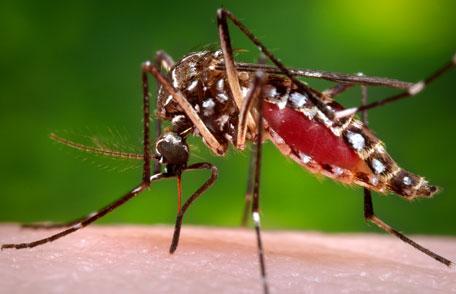
GREENE COUNTY - It is that time of year again and the Greene County Health Department is seeking the public’s assistance in obtaining dead birds to submit to the Illinois Department of Public Health (IDPH) to test for the presence of West Nile Virus (WNV). Please contact the Department at 217-942-6961, Ext.102, and the staff will retrieve species of “perching birds” (Passeriformes) in addition to crows, blue jays, robins, cardinals, catbirds, mockingbirds, many species of sparrows, finches, flycatchers, swallows, warblers, wrens and small or medium size hawks or owls for submission to the Veterinary Diagnostic Laboratory, School of Veterinary Medicine, University of Illinois, Urbana-Champaign for testing.
Get The Latest News!
Don't miss our top stories and need-to-know news everyday in your inbox.
An internet link for the identification of the above birds is available by visiting the IDPH’s West Nile Virus web page: http://www.dph.illinois.gov/topics-services/diseases-and-conditions/west-nile-virus.
As per Vector Control / Arbovirus Surveillance, IDPH, since WNV arrived in Illinois at the end of the summer of 2001, dead birds have been important sentinels for early WNV activity. For example, the Centers for Disease Control and Prevention (CDC) has found counties that record a WNV- positive bird before August 1 were twice as likely to have a human case compared to those who recorded a WNV-positive bird after August 1. Therefore, the dead birds will be accepted for testing beginning May 1 through October 15, 2021. This effort will help detect any early season WNV activity promoted by weather conditions this spring. The dryer the summer becomes creates the increase of Culex pipiens (the common house mosquito) population which is the disease transmitter of the West Nile Virus.
The Department is asking the community to be aware of any birds that: have been dead for less than 48 hours died singly (birds dying from WNV are usually found singly, scattered over a wide area versus birds that die from other causes-storm mortality, food poisoning, toxicants - usually die in groups or clusters in a small area)
NOT decomposed (strong odor present, dried/deflated eyes, maggots present or bloated with decomposition gases or damaged by scavenging animals
No obvious cause of death, i.e. crushed, shot or killed by a motor vehicle
Dead birds that do not meet the requirements should be properly disposed of by
an adult by burying or double wrapping in plastic bags and disposing properly without touching the carcass. Wash hands upon completion.
Please keep in mind that the onset of WNV human cases with Illinois exposure has been known to occur as early as May in the past but the virus has also been documented of onset in July in 2008 and as late as October in 2013. If the dead bird meets the conditions for testing or if you have any questions contact the Greene County Health Department for further instructions or information.
Prevention measures to decrease the mosquito population include eliminating all ponding or pooling of stagnant water (including containers of stagnant water and water high in organic matter such as sewage effluent) i.e. roof guttering and change any collectors of water (such as birdbaths, pets’ water bowls, yard toys, potted plant containers or kiddy pools) at least weekly. The growth stage of the mosquito is 10 days from an egg to an adult. The Department upon request is able to larvicide areas that cannot be eliminated by drainage or any source area where mosquitoes are known to be of a nuisance.
Please call the Health Department, 217-942-6961 Ext. 102, if you know of any areas as described above.
More like this:
